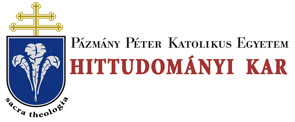Folia Canonica 7. (2004)
STUDIES - Szabolcs Anzelm Szuromi: Patristic Texts in the Collectio Canonum Anselmi Lucensis (Recension 'a') and their Correspondence with the Decretum Gratiani
PATRISTIC TEXTS IN THE COLLECTIO CANONUMANSELMI LUCENSIS 77 textform (extension; contents; order of words) of the patristic canons, which are in both canon law collections, indicates the relation between work of Gratian and Anselm. On this basis we can conclude that 72 [73] canons of 93 [95] have taken from Anselm’s work by Gratian and placed them in his Decretum. These canons contain literally the same text as Gratian and Anselm (St. Augustine: 50 [51 ]; St. Ambrose: 4; St. Cyprian: 5; St. Jerome: 12; St. Basil M. [the origin of attribution is BW]: 1). Writings of Origen and Eusebius were not copied from Anselm’s Collection by Gratian. Anselm did not only copy the text from different patristic works. He constructed many times those by his personal ecclesiological and canonical concept, which was from a Gregorian interpretative horizon. Therefore, some canons, especially in case of works of Jerome (cf. Ans. 7.62; Ans. 7.113; Ans. 11.91; etc.) and Augustine (cf. Ans. 9.40; Ans. 9.44) have been transformed significantly in Anselm ’s Collection.30 On the one hand, it can strengthen our general opinion, that Anselm of Lucca usually used directly the whole text of the particular works, not from any flori legium. On the other, these stresses are a immense help to determine the origin of the material, which was placed into the Decretum Gratiani from different sources, i. e. Anselm ’s Collection. The contents of the canons, their extent, and the missing sentences and words mark significantly the using of Anselm’s version. Naturally, there are some cases when Anselm does not use directly his material from the original source, however he quotes through some author or collection. A good example is the using of the Decretum Burchardi Wormatiensis. When Anselm takes a canon from that canonical collection for his Book 11, sometimes he copies the false attribution too. The identification of text’s origin is certainly quite difficult, especially to analyze its path up to i.e. the context of the Decretum Gratiani. But the textual-critical analysis, which has done on the whole recension ‘A’ form ofAnselm 's Collection, was able to make strict detenninations in the similar cases if groups of canons were taken together from Anselm s Collection into the Decretum Gratiani. III. Conclusion Based on the observation of the patristic material in the Collectio Anselmi Lucensis we can see the ’topography’ of the influence of Anselm s Collection on the Decretum Gratiani. C. 23 q. 4;31 C. 23 q. 5;32 C. 24 q. 1 ;33 and C. 24 q. 334 are significant places in Gratian’s work where we can find together some patristic canon groups from Anselm’s Collection. These canons have also conserved their 30 Cf. Appedix II. 31 C. 23 q. 4 cc. 3-4, 12, 18, 24-25, 38-39, 42^14. 32 C. 23 q. 5 cc. 1-3, 8. 33 C. 24 q. 1 cc. 6-7, 18, 20, 23, 25-26, 31. 34 C. 24 q. 3 cc. 26-28,31.
